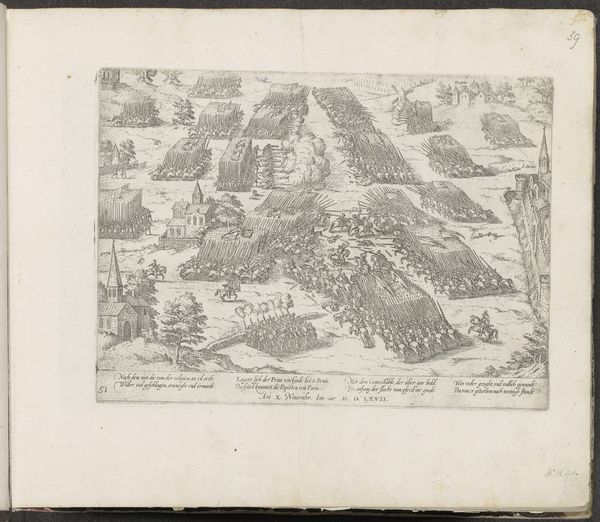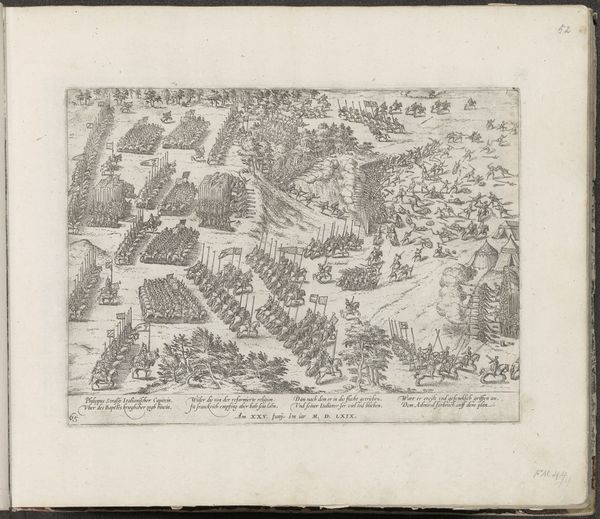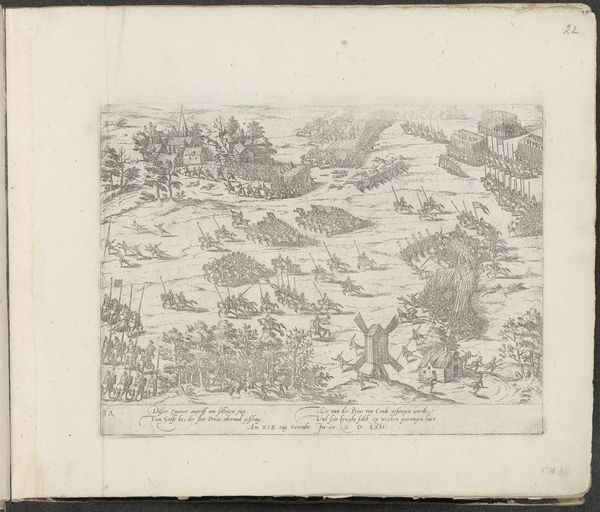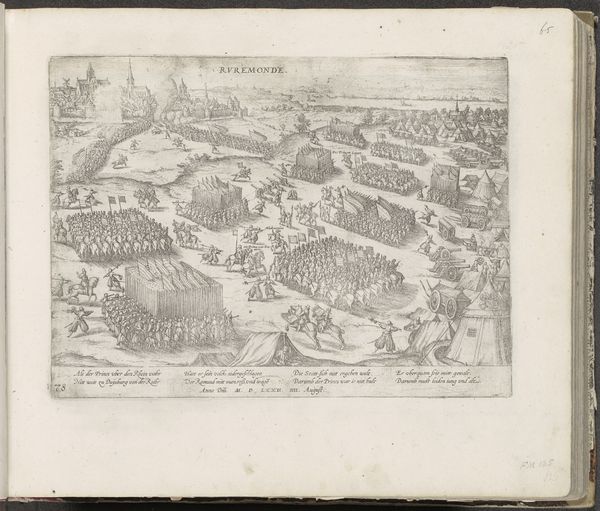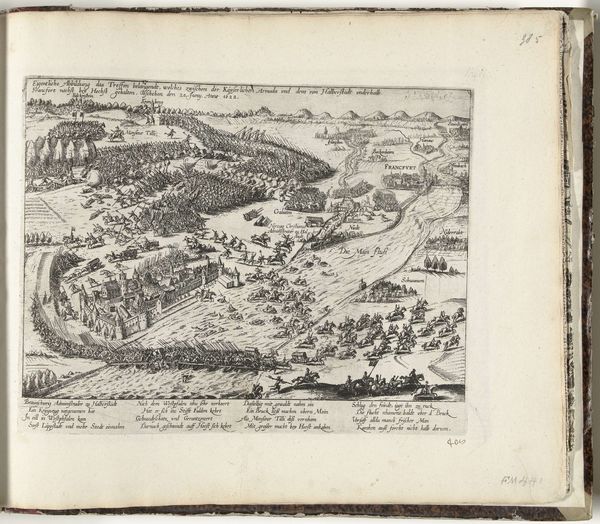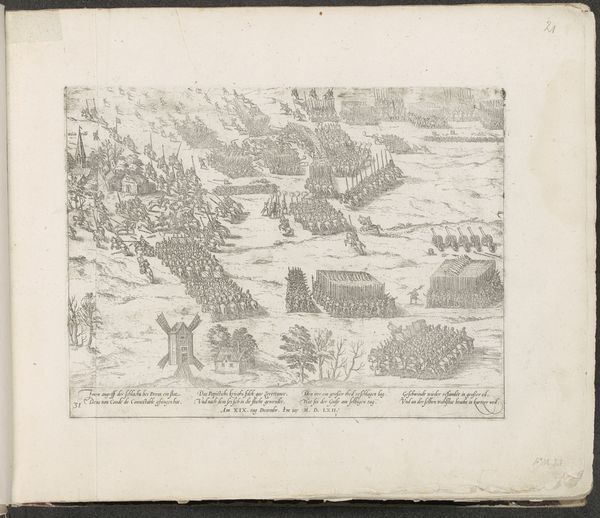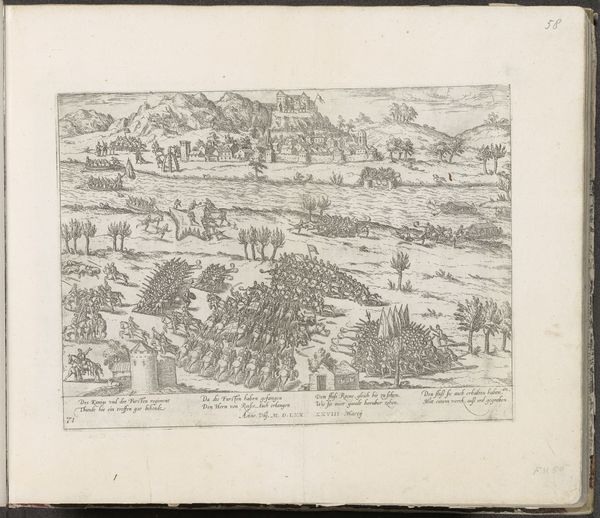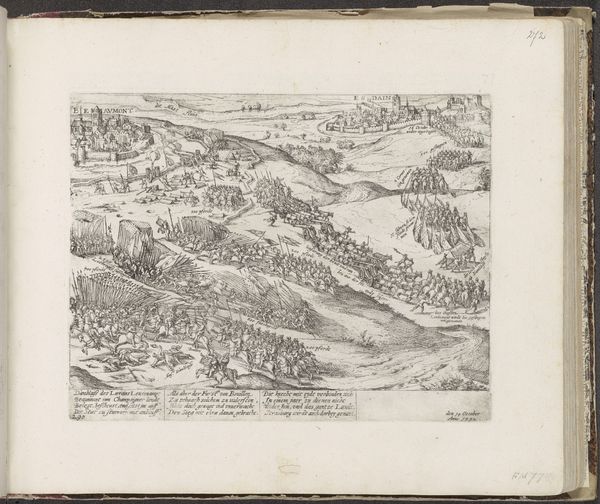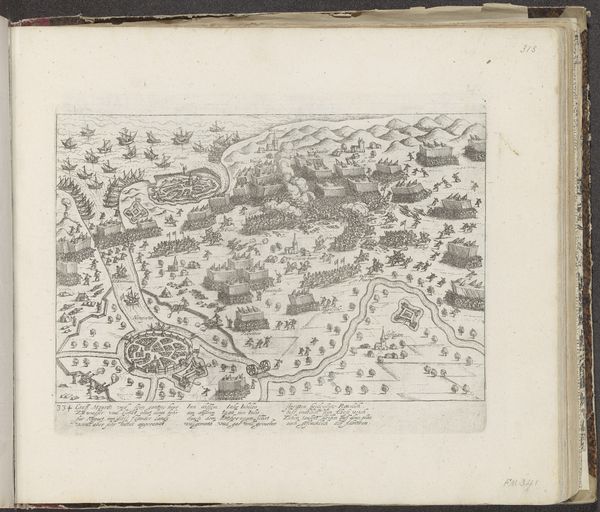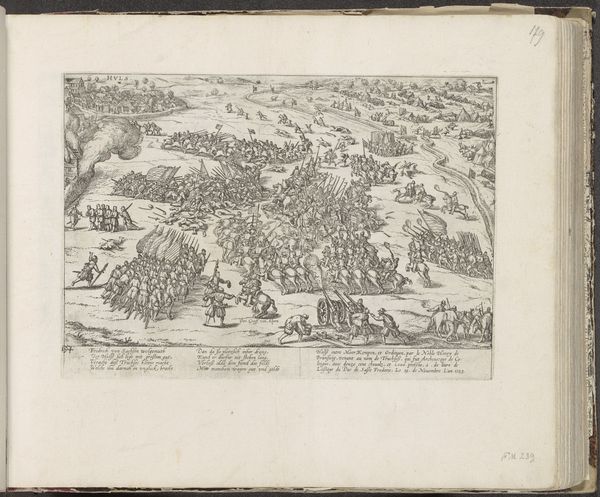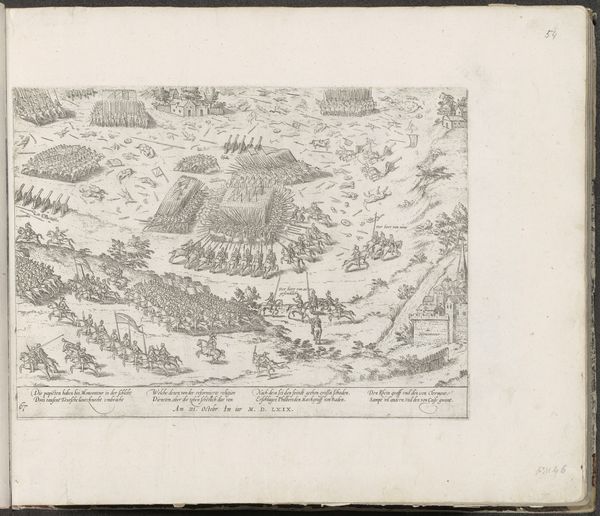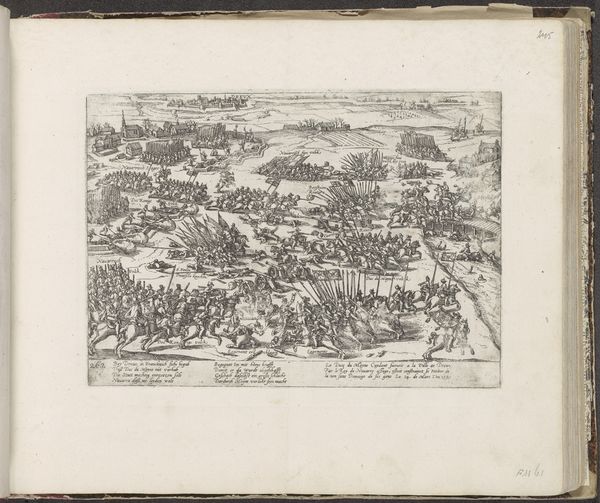
print, engraving
#
medieval
#
narrative-art
#
ink paper printed
# print
#
landscape
#
history-painting
#
engraving
Dimensions: height 208 mm, width 280 mm
Copyright: Rijks Museum: Open Domain
Curator: This print, “Slag bij Dreux, derde treffen, 1562”, made by Frans Hogenberg sometime between 1567 and 1571, depicts the Battle of Dreux. It’s an engraving, printed with ink on paper, currently held at the Rijksmuseum. What’s your immediate reaction? Editor: Utter chaos. The sheer number of figures! It looks like an ant colony that’s been stirred up. The detail is incredible, though, especially given the size and the medium. I find it very overwhelming but I guess, a 16th-century battle would be like that. Curator: Exactly. Hogenberg wasn’t on the battlefield, of course. These prints served as historical records but also, significantly, as propaganda. It was part of a series intended to chronicle and, depending on the audience, to either glorify or demonize events. It certainly shaped public perceptions. Editor: So, it wasn’t necessarily about accuracy, but about narrative? Considering the time and what printing meant to Europe, one might even ask if Hogenberg was trying to create an alternative view of the battle itself through printed form. It feels very carefully staged. Is that windmill symbolic at all, or am I searching too deeply for signs here? Curator: The windmill might simply indicate location. What fascinates me are the processes and economic ramifications that arise in engravings like these: the labor to make it, from initial sketches to carving and printing; its distribution, how that influences the flow of news and opinions... it really demonstrates how technology and its subsequent processes are central to how events become part of cultural memory. Editor: I see what you mean. The act of replication democratizes it somewhat. The piece becomes accessible, consumable, and able to be reproduced endlessly. So many people seeing the same representation of the Battle, potentially influencing attitudes across societal strata. What do you suppose would have been the immediate reception and overall political influence on its audiences? Curator: This print offers a fascinating insight into the battle from a distance while underscoring that distance. It's not necessarily about witnessing the reality, but participating in its unfolding narrative. It's a physical object produced through considerable labor and intention, becoming both a record and an agent in the shaping of how this moment in the early modern times was perceived. Editor: And what's really interesting is its position between the two. Serving neither purposes solely as a material good nor as an artwork, but somewhere intertwined in the middle!
Comments
No comments
Be the first to comment and join the conversation on the ultimate creative platform.
